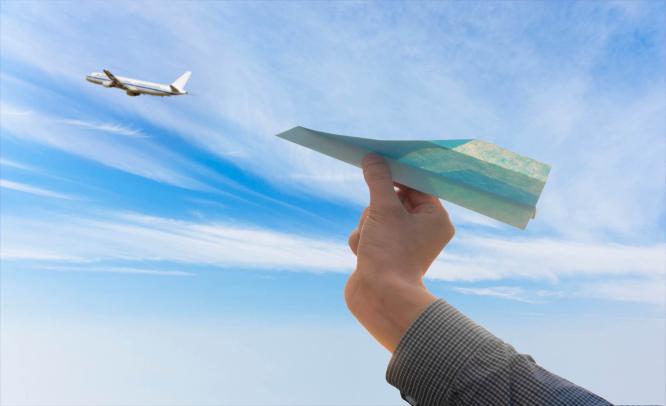Suparna Goswami Bhattacharya
Main drivers for now are low fuel price, expanding middle class and high GDP growth
June 8, 2016: The Indian aviation market is flying high. It is set to become the third largest in the world by 2020. With 81 million trips, the domestic market grew at about 19% during the 12 months up to March 31, 2016 — the highest in the world. The metrics include passenger growth, aircraft growth, and freight growth.
For the period April-March 2015-16, passenger traffic increase was 17% yoy while rise in aircraft was 11.9% yoy when compared to the same period in 2014-15.
Experts attribute the growth to lower fuel price, expanding middle class and high GDP growth.
Rajiv Chib, director (aerospace & defence), PwC, says, “More disposable income is available with the middle class in India which has resulted in a three-fold increase in passenger traffic in the past decade. With increased aircraft movement, I have little doub that we can be the third largest aviation market in the world by 2020.”
So much so that many airlines depend on India to feed their international networks. To be fair, India has an advantage as it is starting from a low base.
Binit Somaia, director South Asia at CAPA, says, “The market is underpenetrated relative even to other emerging markets. For example, the number of domestic seats per capita in China is almost five times higher. Nevertheless, there is little doubt we are the fastest growing market in the world.”
However, there are potential supply-side constraints which could curb the expansion of traffic. Key issues to be addressed include the availability of airport infrastructure, airspace and skills. And there is a need to implement a comprehensive and enabling policy framework if the market is to achieve its potential.
Many believe that regulation is one of the key areas where reforms are needed big time, primarily because India happens to be one of the most regulated aviation markets globally. Diogenis Papiomytis, director, aerospace & defence, Frost & Sullivan, rues that no one really benefits from these regulations. “Regulations impact every aspect of an airline’s operations. In the case of India, it affects fuel prices that carriers have to pay through high added sales taxes on aviation turbine fuel (ATF). Regulation negatively impacts the competitiveness of Indian airlines vis-à- vis their foreign competitors,” says Papiomytis. He adds that though foreign ownership and control laws have been relaxed, it has been done only partially. Even the 5 year/20 aircraft rule needs to be changed as it makes Indian airlines highly uncompetitive.
Even in terms of overall financial health, the aviation sector in India has seen improvement. The 1990s saw, perhaps, a dozen airlines fails while there have been only five actual bankruptcies in the past 10 years. Two major bankruptcies, Air India and Jet Airways, were averted. Financial year 2016 saw the industry come up with its best performance. The major contributors to this profitability are Indigo (~$300mn), Jet Airways (~$185 mn) and a healthier Spicejet (~$60mn).
However, to meet the increase in demand, there is a need for modernisation. “With increase in air traffic, there is a need to improve basic infrastructure of airports. Also, alternate airports may be required to reduce the congestion in metro cities,” says Chib.
But first, the government needs to get its act together. “As of now, there is no clear vision from the Indian government on how much it needs to invest, on what projects and over what timeframe. Some numbers bounce back and forth from Indian ministers, such as a cost of $120bn for the modernisation and construction of airports. But these mean nothing when there is no strategic vision or plan. Though some new terminals are getting built, it is too little and it is getting too late,” says Papiomytis. The effect will be that airlines won’t be able to add capacity in the next 5-10 years to meet increased demand levels, simply because of the saturated infrastructure.

